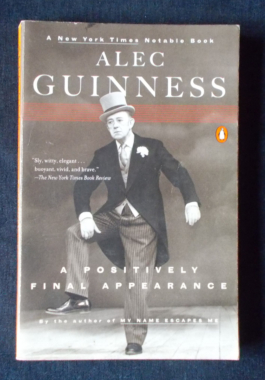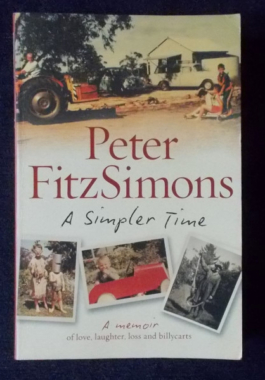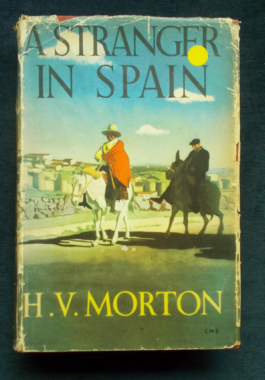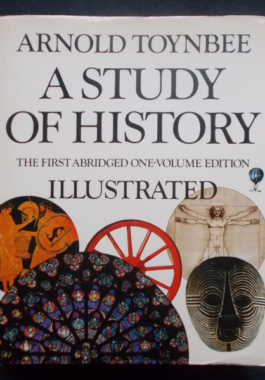-
 The fascinating and true story of a 20th century bush legend. Known only from fleeting glimpses to the people of South Australia's Riverland region who gave him his name, the Possum deliberately turned his back on society to live almost entirely off the land as a recluse on the banks of the Murray River. It took Max Jones, country detective, almost thirty years to solve the mystery behind the man called Possum. From chance encounters, brief meetings and full scale conversations with the man himself - and from the testimony of others - the author pieced together Possum's extraordinary life story. Illustrated with photographs, sketches, newspaper articles and entries from the Possum's own diary.
The fascinating and true story of a 20th century bush legend. Known only from fleeting glimpses to the people of South Australia's Riverland region who gave him his name, the Possum deliberately turned his back on society to live almost entirely off the land as a recluse on the banks of the Murray River. It took Max Jones, country detective, almost thirty years to solve the mystery behind the man called Possum. From chance encounters, brief meetings and full scale conversations with the man himself - and from the testimony of others - the author pieced together Possum's extraordinary life story. Illustrated with photographs, sketches, newspaper articles and entries from the Possum's own diary. -
 Sir Alec Guinness (1914 - 2000) makes his observations on Britain, taken from his journal at the tumultuous times of Princess Diana's death, the election of Tony Blair and comments on his quintessentially English country life with Mrs Guinness. A follow up to My Name Escapes Me, this volume covers 1996 - 1998. Sir Alec offers frank and surprising reflections on appearing in Star Wars and hilarious reminiscences of Humphrey Bogart and Noel Coward.
Sir Alec Guinness (1914 - 2000) makes his observations on Britain, taken from his journal at the tumultuous times of Princess Diana's death, the election of Tony Blair and comments on his quintessentially English country life with Mrs Guinness. A follow up to My Name Escapes Me, this volume covers 1996 - 1998. Sir Alec offers frank and surprising reflections on appearing in Star Wars and hilarious reminiscences of Humphrey Bogart and Noel Coward. -
 Wells intended this volume to be straightforwardly, almost as a novel is read. It gives, in a most general way, an account of our present knowledge of history, shorn of elaborations and complications. Its special end is to meet the needs of the busy general reader who 'wishes to repair his faded or fragmentary conception of the great adventure of Mankind.' This edition was revised from the 1922 edition and prepared b y Professor G.P. Wells (H.G. Wells' son) and Raymond Postgate. Five new chapters have been added and the original maps are redrawn, with two new maps added. Cover: Detail from Prismes électriques by Sonia Delaunay.
Wells intended this volume to be straightforwardly, almost as a novel is read. It gives, in a most general way, an account of our present knowledge of history, shorn of elaborations and complications. Its special end is to meet the needs of the busy general reader who 'wishes to repair his faded or fragmentary conception of the great adventure of Mankind.' This edition was revised from the 1922 edition and prepared b y Professor G.P. Wells (H.G. Wells' son) and Raymond Postgate. Five new chapters have been added and the original maps are redrawn, with two new maps added. Cover: Detail from Prismes électriques by Sonia Delaunay. -

Peter Fitzsimon's account of growing up on the rural outskirts of Sydney in the 1960s is first and foremost a tribute to family. It's also a salute to times and generations past, when praise was understated and love unstinting; work was hard and values were clear; when people stood by each other in adversity. Days were for doing. Here is a childhood full of mischief, camaraderie, eccentric characters, drama, love, loss and billy-carts.
-
 First published in 1954. With his trademark wit and inquisitive eye, H. V. Morton travels through a Spain unspoilt by tourism. Interspersed with episodes from Spain's rich history, this is a journey of discovery that would appeal to those with a sense of adventure and who appreciate a striking introduction to Spanish history and culture. "The stranger who wishes to approach Spain with sympathy and appreciation," H. V. Morton wrote, "must do so through its history." He takes the reader on a leisurely tour through a country where the past is very much alive, revealing a rich tapestry of events related with humor, charm, and sincerity. The Spain of the Christian kings and the caliphs of Córdoba, of Philip II, and the tragic Hapsburgs, the Spain of Columbus, of St Teresa, of Cortés and Pizarro, Velázquez, and Goya, is the thread of Morton's narrative. With colour and black and white illustrations.
First published in 1954. With his trademark wit and inquisitive eye, H. V. Morton travels through a Spain unspoilt by tourism. Interspersed with episodes from Spain's rich history, this is a journey of discovery that would appeal to those with a sense of adventure and who appreciate a striking introduction to Spanish history and culture. "The stranger who wishes to approach Spain with sympathy and appreciation," H. V. Morton wrote, "must do so through its history." He takes the reader on a leisurely tour through a country where the past is very much alive, revealing a rich tapestry of events related with humor, charm, and sincerity. The Spain of the Christian kings and the caliphs of Córdoba, of Philip II, and the tragic Hapsburgs, the Spain of Columbus, of St Teresa, of Cortés and Pizarro, Velázquez, and Goya, is the thread of Morton's narrative. With colour and black and white illustrations. -
 Originally published in twelve volumes, this edition revised by the author and Jane Caplan is the essence of that original work. It is also a redrafted, revised and updated version. Chapters: The Shape Of History; The Geneses Of Civilisations; The Growth Of Civilisations; The Breakdown Of Civilisations; The Disintegrations Of Civilsations; Universal States; Universal Churches; Heroic Ages; Contacts Between Civilisations In Space; Contacts Between Civilisations In Time; Why Study History? With over 500 illustrations.
Originally published in twelve volumes, this edition revised by the author and Jane Caplan is the essence of that original work. It is also a redrafted, revised and updated version. Chapters: The Shape Of History; The Geneses Of Civilisations; The Growth Of Civilisations; The Breakdown Of Civilisations; The Disintegrations Of Civilsations; Universal States; Universal Churches; Heroic Ages; Contacts Between Civilisations In Space; Contacts Between Civilisations In Time; Why Study History? With over 500 illustrations. -
 Dickens' Mr Micawber solved his problems by emigrating to Australia; his example was followed by Dickens' own sons. Alfred arrived in 1865 and younger brother Edward three years later. They both became managers and part-owners of stations in the far west of New South Wales, and stock and station agents. Alfred moved to Victoria and lectured both in Australia and overseas. Edward went to live in Wilcannia which he represented in Parliament. They may not have won fame or fortune, but their story, partly told through family letters, is still absorbing and would be of interest to any fan of Dickens.
Dickens' Mr Micawber solved his problems by emigrating to Australia; his example was followed by Dickens' own sons. Alfred arrived in 1865 and younger brother Edward three years later. They both became managers and part-owners of stations in the far west of New South Wales, and stock and station agents. Alfred moved to Victoria and lectured both in Australia and overseas. Edward went to live in Wilcannia which he represented in Parliament. They may not have won fame or fortune, but their story, partly told through family letters, is still absorbing and would be of interest to any fan of Dickens. -
 Like a tramp, a pilgrim or a wandering scholar, an 18 year-old boy set out one wet December day in 1933 to walk to Constantinople. In that year, when Hitler came to power, adventure beckoned and youth was golden for Patrick Leigh Fermor as he tramped up the Rhine and down the Danube towards the mysterious gateway to the East - sleeping barns, or in fairy tale castles, losing his possessions and being showered with gifts. But there was more to discover than freedom and the camaraderie of the road: the arts, landscapes, religions, languages, histories and above all, the people of a dozen civilisations unfolded before his hungry young mind - sharply outlined before the gathering storm. This volume covers his journey from the Hook of Holland to the Middle Danube.
Like a tramp, a pilgrim or a wandering scholar, an 18 year-old boy set out one wet December day in 1933 to walk to Constantinople. In that year, when Hitler came to power, adventure beckoned and youth was golden for Patrick Leigh Fermor as he tramped up the Rhine and down the Danube towards the mysterious gateway to the East - sleeping barns, or in fairy tale castles, losing his possessions and being showered with gifts. But there was more to discover than freedom and the camaraderie of the road: the arts, landscapes, religions, languages, histories and above all, the people of a dozen civilisations unfolded before his hungry young mind - sharply outlined before the gathering storm. This volume covers his journey from the Hook of Holland to the Middle Danube. -
 Shot down in 1942, young Australian fighter pilot John Williams DFC became a POW in the notorious Stalag Luft III camp in Germany. John had joined the air force shortly before the outbreak of war and, in the larrikin tradition, led his squadron into air combat over the deserts of Libya and Egypt dressed in sandals and shorts. John and his best mate Rusty Kierath were among the 76 POWs who tunnelled their way out of the supposedly escape-proof camp under the noses of their German guards in what later became the Hollywood blockbuster, The Great Escape. Their families never learned what really happened once the pair made it out into the forest. John's niece Louise Williams has pieced together his life, from his upbringing in a tight-knit family hit hard by the Depression, to his exploits in the air, and the many missing details of the tragic escape. It is a powerful and intimate story of one of the most dramatic episodes of World War II. Illustrated with black and white photographs.
Shot down in 1942, young Australian fighter pilot John Williams DFC became a POW in the notorious Stalag Luft III camp in Germany. John had joined the air force shortly before the outbreak of war and, in the larrikin tradition, led his squadron into air combat over the deserts of Libya and Egypt dressed in sandals and shorts. John and his best mate Rusty Kierath were among the 76 POWs who tunnelled their way out of the supposedly escape-proof camp under the noses of their German guards in what later became the Hollywood blockbuster, The Great Escape. Their families never learned what really happened once the pair made it out into the forest. John's niece Louise Williams has pieced together his life, from his upbringing in a tight-knit family hit hard by the Depression, to his exploits in the air, and the many missing details of the tragic escape. It is a powerful and intimate story of one of the most dramatic episodes of World War II. Illustrated with black and white photographs.


